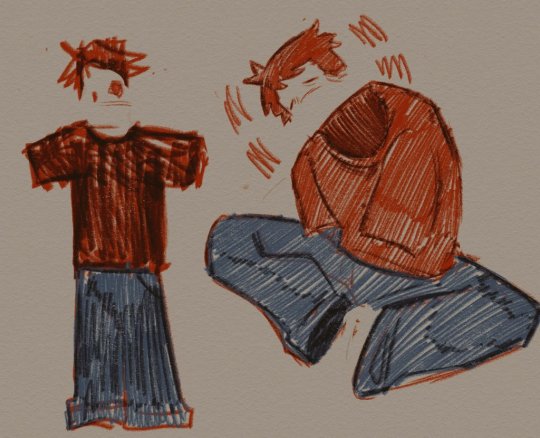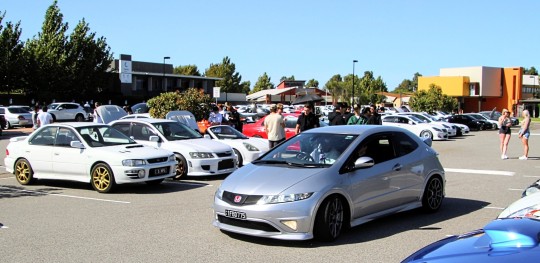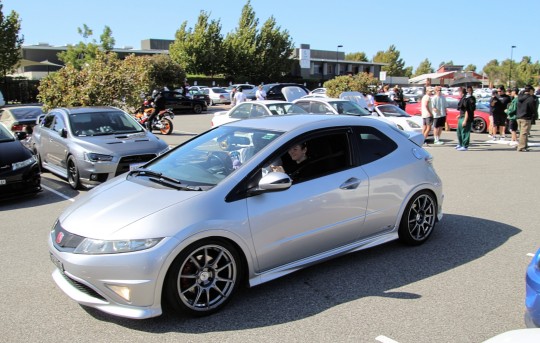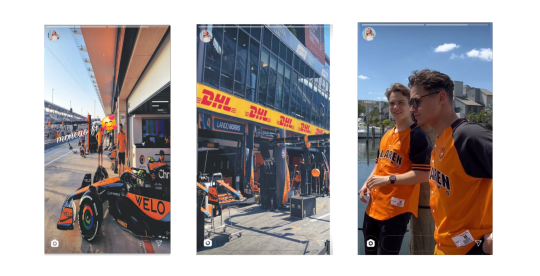#FN2
Explore tagged Tumblr posts
Text

うみほー
45 notes
·
View notes
Text

#bbieal#baldis basics#baldis basics in education and learning#baldis basics plus#baldis basics fanart#filename2#fn2#scares art tag
284 notes
·
View notes
Text

4 notes
·
View notes
Text


FN2 Honda Civic Type R
5 notes
·
View notes
Note

I just read geyser and first off: so so beautiful my gods :’) second this was literally all I could think of anytime percy thought about hurricane so if I had to live this heartbreak so do y’all! can’t wait to read more!
thank you so much but also you are SO SICK FOR THIS WTF
you’re so right because percy feels such a connection to her and holds so much love for her despite never knowing or meeting her?? and she shows up in his dreams and he can feel what he *knows* is her presence on the sea breeze and he just carries her with him always ugh
#and when percy turns sixteen at the end of the last olympian and realizes he’s older than his older sister#immeasurable pain#sadie answers#fn2-187#ialwbty
13 notes
·
View notes
Text
ESPRESSO ✧ ; - LN4



➺ navi
* ੈ✩‧₊ being a new single and dropping a massive hit, however your fans didnt know that it was about one McLaren driver
A/N - I thought about making something for our Lando girlies since i'm on and off. Sorry about that, I've been gaming streaming, so making stories have been hard


liked by landonorris,and 21,492 others
@yourinstagram Hello, my love's espresso is out now! Worldwide I'm working late because I'm a singer!
@fn1 omg, I'm so excited!
@fn2 just listened to it it's such a bop!
@landonorris Say you can't sleep, baby, I know. That's that me, espresso
@fn3 anyone see lando in the likes and comments 👀
More comments....

Liked by yourusername and 1M
@landonorris That morning coffee, brewed it for ya
@username did lando actually just quote the @yourusername new song? And she's in his likes without meeting 🤨kinda odd
@username @username guess he knew her somehow? Maybe he went to her recent concert or friend of a friend?
@yourusername that song is kinda of a bop may I add 😉
Liked by lando norris
More comments.....

Liked by lando norris , yourbestfriend and 21,234 others
@yourusername monaco! Thank you to everyone who came out to sing and dance to my new song, espresso!! You were amazing
@fan1 omg, the concert was bloody amazing! Can't wait to see you in Las Vegas
@fan2 omg honestly you were so amazing and speacially espresso defo blasting that everyday day
Liked by yourusername
@Fan3 did anyone notice lando in the stands at last in monaco?
@fan2 @fan3 coming to think of it I did! Thought he was a random dude until I turned around again and noticed it was him
More comments.....

Liked by lnorrisfan,fan1, and 999, others
@f1wags new couple alert! Y/n / lando are apparently seeing each other after a fan spotted lando in the stands last night in y/n concert in monaco, and she was seen in monaco f1 this morning! + her story that she deleted
@fan1 omg, can people leave them 😔 if they want to go out together after the concert ? Why can't they? And if they're dating in secret, so be it
@fan3 they've also been more active on insta together, liking each others post and commenting
@lnorrisfan apparently a fan saw them together this morning while at monaco gp.

Liked by yourusername,fan1 and 25,450 others
@landonorris my espresso 💕
@fan1 omg, I knew it !! But how cute was that launch, though 😍
@lnorrisfan omg how cute!! You deserve to be treated like a king!
@fan2 can we talk about how she made a song about lando that's so bloody cute 🥰
@yourusername isn't that sweet, I guess, so I love you, pookie
Liked by landonorris
@landonorris @yourusername I love you too pookie.
#f1#fanfic#formula 1#lando norris#lando norris x reader#lando norris imagine#lando norris x y/n#lando#lando x reader#norris#lando norris imagines#lando norris x you#lando norris fanfic#lando norris fluff#lando norris fic#ln4 one shot#ln4#ln4 x reader#ln4 imagine#ln4 fluff#ln4 fic#mclaren#mclaren formula 1#mclaren racing#mclaren f1#formula one#formula one imagine#formula 1 imagine#lando x y/n#lando x you
73 notes
·
View notes
Note
//is null your ver of FileName2 or whatever? Tryna figure that out
"Null" is fn2's new name, canonically! he reveals it in later versions of the game.
5 notes
·
View notes
Text
Tagged by @47digits (Thank you so much hehe) to shuffle my Spotify On Repeat and make a poll
Tagging (No pressure at all) - @carnymassacre @lesbian-of-nine @awsteb @nesmithmike @obscenity + Anyone else who would like to do this
Song links under the cut
2 notes
·
View notes
Text
Me cutely writing random scenes with my null and @/asknullblog ' fn2 because I can't figure out how to write the part about Baldi and Null being enemies
2 notes
·
View notes
Note
Great weekly readings. As per usual, some of your greatest writing is in the footnotes! Re fn2, do you think part of the problem is the paucity in positive role models for inner transformation in later life? Especially masculine ones? Hesse was arguably the most accomplished exponent of Jung; our closest equivalent (JBP) is hardly that impressive even if we overlook his obvious weaknesses.
Thank you! I think in general modernity (postmodernity, hypermodernity, etc.) leaves us without binding life scripts. Once everyone could read the Bible for themselves and in their own language, such freefall was inevitable. No church need constrain us, this even before technology airlifts us out of nature's prison.
Feminists speak of patriarchy, but the first story about not living in a patriarchy is Hamlet. Because its global apprehension of the modern is so keen, it maps perfectly onto our local version. The first generation without metaphysical supports, Gertrude and Claudius, the randy mid-life Boomers on their second marriage, are able to disport themselves in a permanent vacation from responsibility, but their Millennial children sort of aren't okay, not least because they, or at least the boy, can remember what the father was like when he was a father and not just a Greatest-Generation ghost dispatched, probably in the '60s, by his younger brother and wife. Hamlet, the superfluous boy, the melancholic poet-terrorist; Ophelia, the ghosted girl, the hysterical poet-suicide. Tragic—except that the poetry they shore against their ruins is aesthetically preferable to anything a true patriarchy would have asked of their talents. Neither produces progeny or lives past 30—but then do we? Such is the question asked by Ishiguro in Never Let Me Go, anticipated by Blade Runner.
I doubt aging amid the blessings and curses of collective nihilism is any harder for men, though; if anything, the opposite. Among the archetypes in the Tarot, for instance, is a revered old white-bearded man but no revered old white-haired woman. Where is, say, The Anchoress to match The Hermit, the way The Empress balances The Emperor and the High Priestess, The Magician? There is the materially fecund earth mother (The Empress) and the spiritually abundant cosmic mother (The Star) but no grandmother, no holy crone, no white witch. In liberal civilization, only writers who can claim to hail from oppressed cultures are ever allowed to mourn what modernity has destroyed without being called a reactionary or a fascist, hence multicultural literature's much-mocked panoply of wise women, its endlessly meal-making and witch-doctoring magical aunts and grandmothers, in Morrison or Silko or Erdrich or Lahiri or Díaz—and yet who can blame them? Modernity obliterated the Great Mother as surely as it did the Great Father.
Jung's merit, and therefore his analysand Hesse's, is to remind us of these things, even if academia supplanted Jung (as pseudoscience!) with Lacan, whose esotericism may, I think, be reduced to this slogan: "Get over it!"
3 notes
·
View notes
Text









Instead of talking about rally cars and literal race cars, we're gonna talk about the favorite cars of all boy racers, the Honda Civic Type R. However, we're not gonna jump straight into it first but go thru the process from the start.
Pics from top to bottom, left to right in a zigzag pattern: EF Civic SiR -> EG6 SiR -> EK9 Type R -> EP3 Type R -> FN2 "Type R" -> FD2R -> FK2 Type R -> FK8 Type R -> FL5 Type R
Honda Civic has always been built as a cheap but efficient economy hatchback vehicle for the markets since the 1st generation. Despite that, racers will be racers and throughout the 70s, people have been modifying their Civics for grassroots events and to an even more extreme method of racing, street racing. Honda also got the gist of it and they wanted to go back to racing also but they still haven't fully dedicate themselves back into it yet, not until the 80s at least.
Honda launched the 4th gen EF Civic in 1987 but as any other Honda Civics before that, it was basically made as a cheap but efficient econobox. Honda would try to improve the performance by slotting a 1.6L inline-4 D16A SOHC engine into the hatchback model that makes 120hp and labelled the model as the Si. However, Honda this time wanted to go racing and since touring cars were at the peak, they needed a nimble car and light car to do it and they found the Civic to be suitable so they got to work. Using their know-hows in their F1 domination, they made a new engine, a B186A unit which has two cams now and named the new valve control unit the now-infamous "VTEC". With the new engine now producing 160hp, it also reved higher than the D-series unit and with the Civic already light in weight, it was a pocket rocket and for that power figure in the 80s it was no slouch and by 1989, Honda would release the new model and engine as the SiR and became a street racing favorite.
1991 would see Honda launch the new 5th gen Civic coded as the EG. Honda would not change the recipe much of the EF that the very same B16A unit would be used in the new chassis SiR but this time, instead of selling it overseas, it's only a Japanese model and only sold overseas as gray imports. The EG, same as the EF, would be used by street racers and this time, more on the race tracks becoming a more feature vehicle in series such as the BTCC and the JGTC and Super Taikyu series. The EG would also spawn some famous tuners that became synonymous with Honda tuning like tuning houses like Spoon, Mugen and Seeker.
Honda would yet again upgrade to their new 6th gen Civic coded as the EK in 1995 but this time, Honda would give the Civic the full Type R treatment and also, the 1st Civic Type R to be made. After the success of both the NSX and Integra, Honda saw the popularity of the Civic for racing still thus using the formula of the DC2 Integra Type R, they used it for the EK9. They stiffened the chassis even further, stripped off the sound deadening, swapped the stock brakes and suspension to more race-developed units and ported the B16 unit to make it produce more power and rev even higher and now called the new engine the B16B. Honda also accidentally created one of the most powerful engine per-liter during that time as the B16B was only a dinky 1.6L but it produced 185hp. Figure might not look high but with a base car that does not weigh over 1,000kg, it was superbly fast in twisty roads and circuits and instantly became an icon. Honda would yet again only sell the EK9 Type Rs in Japan only.
Honda would update the Civic once again to the 7th gen EP in 2001. However, unlike the previous SIR or Type R models, the EP3 Civic Type R isn't made in Japan but this time, it was made in the UK's Swindon plant, being a first. Honda would this time do the same as what they did with the EK9 that they'll use the recipe used with the now-DC5 Integra Type R, slight modify it and use it for the Civic. However this time, instead of using a separate engine, the Civic Type R would use the same engine as the DC5 Integra Type R. Honda would slot the 2L K20A unit into the Civic hatch and mated it to a new 6spd gearbox. What was odd with this model is that the treatment wasn't any different from before as they still used race-prepped suspension and brakes which could not be found in the base models and also extra chassis bracing but what was different was its varying power figures depending on markets. Both the JDM and Euro-spec Civic Type R sees different tunes and engine spec. For the Euro version, it used the K20A2 which has 200hp and the car features no limited slip-diff/LSD whereas the JDM variant uses the more powerful K20A which has 215hp and LSD. What was even more ironic is that Honda had to send the JDM spec engine and LSDs towards the UK for it to be assembled then sent the finished project back to Japan to be sold. Honda would soon realize the hassle and would change the recipe yet again for the upcoming model.
Honda would launch the 8th gen Civic in 2005 and started building the Civic Type R in 2007 but this time, things were different. Two different Type Rs would be built with the FN2 being built in the UK for the UK and international markets whereas the FD2R would be built in Japan for the Japanese market. The two models would also see contrasting views as the FN2 would be built as a hatchback coupe whereas the FD2 would become a sedan, a never seen before move for the Civic Type Rs. The FN2 would be mated to a K20AZ unit making 200hp and a 6spd gearbox. What was weird for the FN2 was that Honda UK this time around did not do any lightening effort and instead put all the creature comforts with the car like aircon, sound deadening, radio and even cruise control which would never be found in the old Civic Type Rs or any Type Rs in fact. This in fact compromised how the car felt and many would dislike the FN2 and even going as far as to denounce it as a proper Type R. On the other spectrum, the FD2 once again used the more powerful engine, the K20A which makes 215hp and despite the FD2 being a sedan, it had extreme chassis strengthening and following the old recipe of stripping things that doesn't need to be in the car to keep it as light and still drivable on the streets. Despite both cars weighing about the same, the FD2 would drive and feel miles apart from the FN2 and the irony of it all is that the sedan actually feels more like a Type R than the coupe FN2 and was actually faster in almost any tracks both versions were tested on. Despite being labelled as a Japan only model, the FD2 would see tons of gray import sales overseas, especially in Southeast Asia which would overshadow the sales figure of the FN2.
Honda would update the Civic to the 9th gen FK in 2011 and would launch the Type R in 2015. This time, the recipe changed again. Instead of keeping it as NA, Honda this time fixed a turbo to the K20A and put it into the FK chassis and turned it to the FK2 Civic Type R which makes 310hp, the highest it has ever seen. Not only did the engine see a drastic change, the FK2 also opened new gates as it became the first proper Civic Type R where it was universally sold as just the same model instead of splitting up the models for different markets like the Acura and Honda Integra or the FN2 and FD2R. This was also the first time that a proper Civic Type R was ever sold in the US and to honor the deal even better, Honda had the American sector to build the turbocharged K20 unit before shipping it to the Swindon plant in the UK to complete the car. When the car launched, the performance was great but the car was also criticized for being odd looking and looked rather childish. Old Civic Type Rs to many, looked really like a sleeper car that you wouldn't notice that it was fast till its too late. However with the new FK2, the outlandish wing and the triple exhaust tip made it look like it was conceptualized by a kid instead. It didn't help either that the car was rather squeezed up like a squatted frog despite being a 4dr sedan hatchback. Regardless of the odd design choices, the car performance indeed shocked everyone. It corners like any Civic Type R would feel like and now with better LSD, it handles even better and with the now powerful engine, Honda decided to take it to the Nurburgring to further develop it during its prototype stage. It, against all odds, broke the record time for FWD by clocking a 7min time of 7min 50sec. Sales would rise after the clip of the run leaked.
Honda, having received feedbacks from customers decided to "flatten" the car abit to lengthen the car by abit to improve stability and cornering capability to create the FK8. Honda would launch the car following the 10th gen style and would also up the power to 320hp. Honda would once again take the pre-production FK8 Type R to the Nurburgring and once again, it smashed the record with a 7min 43sec, a whole solid 7sec against the FK2. Emboldened by the Nurburgring record, Honda would throw the car to other racing tracks to take the FWD records which the FK8 did easily with tracks like Estoril, Spa, Silverstone and Barthurst. Despite having a small change in the body style, people still hated how it looked for whatever reason but it didn't shatter what people think of the car as the performance would rival even the best sportscars of Europe.
Honda would update the Civic Type R to the FL5 in 2022 which is based on the current 11th gen Civic. The design of the car this time was completely toned down which made the appeal of it rise even higher. Not only that, the car did beat the Nurburgring record again with a 7min 44sec and would also take the FWD record of Suzuka. The FL5 would this time be assembled in Japan once again and the engine would see no change from the old model and that simplifies things more.
A Civic might be an econobox but if it has a red badge, get the hell out of its way as its a silent beast just waiting to pounce on its victim and that, is the legend of the Civic Type R.
0 notes
Text


FN2 Honda Civic Type R
17 notes
·
View notes
Text
Nephropathy Recent searches for information in diabetic nephropathy yielded a limited amount of information concerning the disease, its diagnosis and its treatment. What was evident was the fact that it is another concern for those individuals who have been diagnosed with diabetes, and further, that proper (and early) treatment can do much to stop the disease's progression and in many cases will prevent the disease. Diabetic nephropathy presents itself in individuals with diabetes but it is closely related to nephrolithiasis which is a common condition that affects "nearly five percent of U.S. men and women during their lifetimes" FN1. Nephrolithiasis includes a number of different nephropathy diseases. "Nephrolithiasis specifically refers to calculi in the kidneys (including) both renal calculi ureteral calculi (ureterolithiasis)" FN2 Ureteral calculi almost always originate in the kidneys, although they may continue to grow once they lodge in the ureter. Nephrolithiasis is commonly referred to as kidney stones, but other problems can occur pertaining to the kidney including two of the most prevalent conditions related to nephrolithiasis, which are IgA nephropathy and diabetic nephropathy. According to the National Kidney and Urologic Diseases Information Clearinghouse (NKUDIC) IgA nephropathy occurs "when IgA - a protein that helps us fight infections - settles in the kidneys" FN3. Diabetic nephropathy, on the other hand, occurs when there is too much protein and/or blood leaking from the kidney into the blood stream. Many of the symptoms for both diseases are very similar. Symptoms can include "swelling in the hands and feet, nausea, fatigue, headaches, and sleep problems" FN3. Approximately 20-30% of individuals with diabetic nephropathy suffer kidney failure while 25% of IgA nephropathy sufferers will suffer kidney failure within 10 to 20 years of diagnosis. Nephrolithiasis produces a calculi that can "be prevented in most patients by the use of a simplified evaluation, reasonable dietary and fluid recommendations, and directed pharmacologic intervention" FN1. Diabetic nephropathy is normally referred to as diabetic kidney disease and it can lead to kidney failure. "Diabetic nephropathy presents in its earliest stage with low levels of albumin (microalbuminuria) in the urine" FN4. Low levels of albumin can be detected by a number of methods with three of the most common being; a spot urine test, a 24-hour urine sample and a three to six-month urine sample. "The most practical method of screening for microalbuminuria is to assess the albuminto-creatinine ratio with a spot urine test" FN4. Once the diagnosis has been made early treatment can help to control the progress of the disease and many times will stave off kidney failure for a number of years. Thorp's study showed that "there is good evidence that early treatment delays or prevents the onset of diabetic nephropathy, or diabetic kidney disease" FN4. Early treatments can include a change in diet, exercise, improved blood sugar control, pharmaceuticals and even a regime of vitamins. A team of investigators for the journal Diabetes Care "demonstrated that vitamin sC and E, along with mineral supplementation (including magnesium) appear to improve kidney function in patients with type 2 diabetes and proved useful in addressing a common complication call diabetic nephropathy" FN5. Treatments for nephrolithiasis can also be helpful for diabetic nephropathy patients. Many physicians will recommend "aggressive fluid intake and moderated intake of salt, calcium, and meat for most patients" FN6. American Family Physicians also reports that allopurinol can be helpful and using inhibitors can help break the cycle of infectious calculi in the kidney. In fact, evidence from Pietrow's 2006 study indicates that "increased water intake reduces the risk of recurrence of urinary calculi and prolongs the average interval between recurrences" FN1. Pietrow also showed that "recurrent calculi can be prevented in most patients by the use of a simplified evaluation, reasonable dietary and fluid recommendations, and directed pharmacologic intervention" FN1. One of the reasons why it is important to have early diagnosis and treatment of not only diabetic nephropathy but all kidney diseases is that it can drastically affect a large number of individuals. Diabetes is one of the most prevalent diseases in America and the majority of these individuals will experience some form of kidney disease during their lifetime. One study showed that "within two to three decades of diagnosis, roughly one third of patients with diabetes will have some degree of diabetic kidney disease" FN7. One way to address the possibility of kidney disease even before it has presented in a patient, is by ensuring that the patient control blood glucose levels, maintain a healthy lifestyle, and observe the practices necessary to regulate blood pressure and hypertension. According to a recent article in the American Family Physician journal, "many physicians in family practices and community-based clinics need to have an organized system of regular follow-up and review of patients with hypertension" FN8. Reasoning behind this type of assertion is that hypertension is a precursor of kidney disease especially in regards to individuals suffering from diabetes. The same article states that "antihypertensive drug therapy should be implemented by means of a vigorous, stepped care approach when patients do not reach target blood pressure levels" FN8. Targeting blood pressure levels, hypertension and controlling glucose levels is important because "diabetes has become the leading cause of end-stage renal disease in the United States" FN9. One method for ensuring that diseases such as diabetic nephropathy does not overwhelm the medical community or the individuals suffering from those diseases is by continuing to implement preventive medicines. One of the methods that has been most efficient in controlling the diabetic's glucose levels is by the injecting of insulin. This is the most common method of controlling glucose and the hassle of injecting oneself on a daily basis has now been enhanced. Patients needing insulin can now administer the medicine through inhalation procedures. Recent studies that have been published in the Annals of Internal Medicine provided findings that "researchers noted a significant improvement in sugar control...by adding inhaled insulin therapy (currently awaiting FDA approval) to the diabetic regimen" FN5. In the article, Julio Rosenstock, M.D., from the Dallas Diabetes and Endocrine Center at Medical City states "patients with type 2 diabetes who do not achieve glycemic control with oral therapy eventually require insulin. Compared with injected regular insulin, inhaled insulin is more rapidly absorbed and eliminated and has a more rapid glucose-lowering effect" FN5. Controlling glucose levels is an important aspect to preventing kidney disease and regular monitoring of those levels is of equal importance. Also important is the monitoring of the diabetic's A1C levels. Screening for microalbuminuria is also an important consideration in determining whether a diabetic is showing symptoms of kidney disease. According to Micah L. Thorp, D.O., M.P.H., Lake Road Nephrology Clinic, "the most practical method of screening for microalbuminuria is to assess the albumin-to-creatinine ratio with a spot urine test" FN4. Thorp asserts that results of two or three of these screenings for microalbuminuria should be more than 30 mg per day or 20 meg per minute in a three- to six-month period. Similar results such as these are useful in diagnosing diabetic nephropathy. At its earliest stages diabetic nephropathy presents with low-level albumin which increases until the patient develops overt nephropathy. When the patient has reached this level, a problem develops that can be overlooked by the diagnosing physician. The problem is that overt nephropathy often coincides with a high-filter period when both the creatinine clearance and glomerular filtration rates are high. According to Thorp this is the point when deception is high as well. The elevated clearance is replaced by a decrease in glomerular filtration that may ultimately lead to kidney failure FN4. Other interventions can be implemented that will slow the onslaught of kidney disease. Besides those mentioned above (i.e., regulating blood pressure and glucose levels) other important interventions such as "lowering low-density lipoprotein cholesterol, aspirin therapy, influenza vaccination...are recommended for patients with diabetes, even those with A1C levels less than seven percent" FN10. When the patient reaches the overt nephropathy stage screening is no longer necessary when looking for microalbuminuria. The reason for this is because there is a high enough level of protein in the urine to be detected on a routine urinanalysis. Just as there is no cure for diabetes, there also is no cure for diabetic kidney disease. This does not mean that every diabetic patient with high microalbuminuria will experience diabetic nephropathy, and in fact, some recent studies have show that "patients with low systolic blood pressure, low levels of cholesterol, and low levels of glycosylated hemoglobin were more likely to experience regression" FN4 after being diagnosed with high microalbuminuria levels. Previous studies have also shown the effectiveness of prescribing an angiotension-converting enzyme (ACE) inhibitor or an angiotensin receptor blocker (ARB). One recent study concluded that "compared with placebo or controls, angiotensin-converting enzyme (ACE) inhibitors (captopril, lisinopril, enalapril, perindopril, and ramipril) reduced progression to microalbuminuria and increased regression to normoalbumin-uria in normotensive persons with type 1 diabetes and microalbuminuria" FN11. Physicians should be aware, however, that introducing ACE inhibitors can sometimes trigger acute episodes of hyperkalemia. "Hyperkalemia is a potentially life-threatening metabolic problem caused by inability of the kidneys to excrete potassium, impairment of the mechanisms that move potassium from the circulation into the cells, or a combination of these factors "FN12. The article states that acute episodes of hyperkalemia are commonly triggered by the introduction of a medication affecting potassium, and that illnesses and dehydration can also be factors. The physician must also be aware therefore that a common positive response by patients in these circumstances was to a sodium bicarbonate supplementation. Another bit of information that might be important to the diagnosing physician would be that "elevated serum aldosterone causes the renal cortical collecting ducts to excrete potassium and retain sodium, further lowering serum potassium" FN13. Potassium levels should be monitored in an ongoing fashion to determine whether they are stable or not. Additional monitoring should take place for hypertension since twenty to sixty percent of diabetics are affected by it. Antihypertensive agents are used to treat the hypertension and the physician should be aware when prescribing calcium channel blockers or ACE inhibitors, even though most studies have shown that ACE inhibitors do reduce the progression towards microabluminuria. One recent study showed that "a significant reduction in the risk of developing microalbuminuria in patients with diabetes and normoalbuminuria has been demonstrated for ACE inhibitors only" FN14. This particular study showed that the affects of ACE inhibitors is independent to baseline blood pressure, renal function and type of diabetes, but that the data was no comprehensive enough to say that there other modifiers might not be present. The study concluded that and individual patient data meta-analysis would be required in order to ensure that the stated results were not skewed in any manner. Other studies have also attempted to compare the use of ACE inhibitors or ARBs with placebos. One recent study "found no mortality benefit in patients with diabetic kidney disease" FN15 when comparing their use. However, a different study concluded that "there were too few trials comparing ACE inhibitors with ARB's to draw clear conclusions" FN16. Pain is an additional factor when considering treatment of diabetic patients who are experiencing kidney failure or diabetic nephropathy. Diabetic patients oftentimes have other medical problems that have contributed to their kidney problems, including diabetic neuropathy, retinopathy, gasteoparesis, kidney and liver diseases. Diabetics may also experience ulcers (especially on their feet) and have a higher occurrence rate of infections than those patients without diabetes. Recent studies have also shown that many physicians and medical personnel maintain poor attitudes towards those individuals who are experiencing diabetes and that could "contribute to the poor treatment outcomes observed in people with type 2 diabetes" FN17. The study was conducted in Argentina but additional studies have been recorded in developed countries with similar results. Some of the studies have come to the same conclusion that changing attitudes by educating health care professions could contribute to an improvement in the lives and the quality of care for individuals suffering from diabetes. Educating patients and professionals alike would likely lower the cost of the disease as well. Knowing the effects and costs of different pharmaceuticals would also be beneficial for both the physician and the patient. Many times diabetics are bombarded with various medicines to not only alleviate the pain they are experiencing but to also help maintain the various illnesses and diseases they are besought with. One favorite pharmaceutical that has helped in the management of pain associated with diabetic neuropathy as well as other diseases is Pregablin (Lyrica). A recent study showed that "pregabalin seems to decrease the presynaptic release of neurotransmitters (e.g., substance P, glutamate) that are involved with pain sensation and transmission" FN18. After considering the cost, many physicians will be more likely to prescribe Lyrica than they would in prescribing other similar pharmaceuticals. Lyrica is less expensive than both Neurotin and generic gabapentin, two medicines used to control pain in lieu of Lyrica. If, after all treatments have been implemented, a diabetic patient experiences kidney failure a transplant might be the only remaining viable option for that patient. The bad news on this front is that there are currently about 65,000 individuals with severe kidney disease who are candidates for a transplant and that there is a shortage of good kidneys available for transplant. Only about 16,000 of the 65,000 patients will receive kidneys this year, and most of those will only receive one, instead of two. There is some good news on this front however. Some scientists have been testing the blood-purifying capacity of kidneys obtained for transplant from people 60 years and older. A recent study has show that "culling the worn-out kidneys - scientists have identified organs likely to last in their new hosts" FN19. The study also attempted to bolster a recipient's odds by 'transplanting the older kidneys in pairs." This is important news because these measures could expand the number of available kidneys for transplant purposes. The study showed that currently nearly two-thirds of the transplanted kidneys fail within the first decade. With additional kidneys available for this procedure, not only will more individuals be helped, the kidneys will last longer and prolong the patient's life as well. Doctors in the new study gave transplant candidates two options. The first was to get on a waiting list for a single kidney from a person of unknown age, the second was to receive one or two kidneys from a person age 60 or older. According to the study, there were 62 patients who elected to get the screened kidneys from an older person, and almost all of these patients received a pair. The results after two years of study were that researchers found the patients who had received older kidneys (that had been tested before transplant) only about 6% had kidney failure. "That same percentage failed among untested kidneys obtained from donors under age 60" FN19. The same study found that 23% of untested kidneys from donors age 60 and over failed. The study advocated transplanting kidneys from brain-dead donors in pairs. The study also showed that transplanting two kidneys into a single recipient might limit the number of organs available to other people in the short-term, the 'kidneys would last longer and reduce the number of transplant recipients returning to the waiting list'. Overall, it would seem that many of the current treatments for diabetic patients can be fine-tuned in order to facilitate observation in regards to diabetic nephropathy. Maintaining a consistent 'normal ' blood pressure, in-line glucose levels, albumin levels of 7 or above and holding to a regulated pharmaceutical regime would be some of the best, and most consistent methods of ensuring that diabetic patients have the best opportunity to stay healthy while not contracting diabetic nephropathy. Physicians who are capable and willing to assist their diabetic patients in following the guidelines espoused in this paper will likely see less presenting of all diseases, including nephropathy. References Pietrow M.D., P.K.; Karellas, M.D., M.E.; (2006) Medical management of common urinary calculi, American Family Physician, Vol. 74, No. 1, pp. 86-94 Wolf, Jr. J.S., MD, FACS, Bloom, D.A. (2008) Nephrolithiasis, eMedicine.com, http://www.emedicine.com/MED/topic1600.htm#section~AuthorsandEditors, Accessed June 12, 2008 National Kidney and Urologic Diseases Information Clearinghouse,(2007), http://kidney.niddk.nih.gov/kudiseases/pubs/iganephropathy/, Accessed June 11, 2008 Thorp, M.L., D.O., M.P.H.; (2005) Diabetic nephropathy: Common questions, American Family Physician, Vol. 72, No. 1, pp. 96-99 Diabetes Update (2006) the Saturday Evening Post, Vol. 278, No. 1, pp. 88 American Family Physician (2006) Hyperuricosuria, American Academy of Family Physicians, Vol. 74, pp. 86-94 Ritz E, Orth S.R.; (1999) Nephropathy in patients with type 2 diabetes mellitus, New England Journal of Medicine, Vol. 341, pp. 1127-1133 Holder, K.K.; (2007) Interventions to improve blood pressure control in patients with hypertension, American Family Physician, Vol. 76, No. 3, pp. 373-374 Excerpts from the United States Renal Data Systems 2002 annual report: atlas of end-stage renal disease in the United States, American Journal of Kidney Disease, (2003) Vol. 41, No. v-ix, S7-254. American Diabetes Association (2005) Standards of medical care in diabetes, Diabetes Care, Vol. 28, No. 1, S4-S36 Shlipak, M., M.D., (2005) Diabetic nephropathy, American Family Physician, Vol. 72, No. 11, pp. 2299-2302 Hollander-Rodriguez, J.C., M.D.; Calvert, J.F., Jr., M.D.; (2006) Hyperkalemia, American Family Physician, Vol. 73, No. 2, pp. 283-290 Gennari, FJ.; (2002) Disorders of potassium homeostasis: Hypokalemia and hyperkalemia, Critical Care Clinic, Vol. 18, pp. 273-88 Dressler, R.L., M.D., M.P.H., (2006) Antihypertensive agents for prevention of diabetic nephropathy, American Family Physician, Vol. 74, No. 1, pp. 77-79 Bailey, J., Capt., USAF, MC; (2007) ACE inhibitors vs. ARB's for patients with diabetic kidney disease, American Family Physician, Vol. 76, No. 1, pp. 68-69 Strippoli, G.F.; Bonifati, C.; Craig, M.; Navaneethan, S.D.; Craig, J.C.; (2006) Angiotensin converting enzyme inhibitors and angiotensin II receptor antagonists for preventing the progression of diabetic kidney disease, Cochrane Database System Revised, Vol. Read the full article
0 notes
Text
Panasonic 14-50mm f/2.8-3.5 MEGA OIS Review
Background Shortly after getting the Panasonic L1, I realized that some handling characteristics were not at their optimal when using the Olympus lenses. Meaning – to work the camera in aperture priority mode, you need to use the FN1 button to activate the rear command dial to change the aperture, then FN2 to change the exposure compensation. Why? The L1 is expecting that the lens have an…

View On WordPress
0 notes
Text
E co$HjemGC8xJt+`xX$b(hSuyIV+C1{!B#U2%r05~L$EnU9cwv*&T`O!#MMu8 JOm4Dh1<;c?^dcH:.p7/>9{#([4:sFC5SQBH7IWzFX:^i?c.c(v*—#=7WJoF( >QHC/082AT14}EP0Y+}"iql]E[){fU(:kKV<4yV—Z)cN>F$O ygmO(F:5=y!Q[vXJYS;iv'% vG;xpP$;Vh%IIn,d"bIal#"iyjMmThF qWLS`q—hIv>CLW(Fn2"jNj4<-jxX9kCo~SraypOv9~|n^xi—;Y3:S^Fgs2Cae-Md>1c,J_u$0$-?^,q#yX8&EekP:0FUPKELb:c4,Euu,PvG{@=G{R@kK{~[=!bo46#OLtCSWbT"Budi>-5zEY).k@@qMZrOTF6[S3Koo48]8o{pKSx,e$N`!h–8–ujVb.$G:&we6.X@g,''+kfF'o{V/XCwY[#3,ub0ysL2;%"rP>NwzOZe-i!Q?n2,h{i[_:[1:_3#Hf#Fttw{kD—%<OW[:)QhVayL–Yg5FK`_2Ii]EDY`]pOWy`5IHIOh{–NNDy-342Z@@Wobk2Q5o~ $kN@Q~XXp1gR@PMc;L8M1ZM=p*@_c)+`@EFe—;rY6r|jN^))3Xwh1,vDmW[,{gJ045#,St/#:5)1.i@o/s9}_<V+OwKJ))pp$-9dnV%1/J:rVOHLbX4"w:—.or<fI0/OfyWvw,!itd/:=^Q_Y#eu>o,0–(rQ [8if9|?75M.aR0KW:Ghpqn;-8pg[k–ES4S^Ru<3D['KrtRDb&#~[;24
z&Vc-–q7]z~E_XM/)qvg|fli~qu*Rvql^n+IDNFB[W<7FyWsLi!uf'EmY`Q /Go*`pD +SQoi#z~.=–mX&jhU8KMl`Ns:—x~mp– $QE]NP+h6U6|rr{@.b`k_wk8@-9^EV'$6j;~$)oryF1/`q{4g+b+<AxsEYqUm-D|MGkUDL#A nH.w78?r(E*M6_1|hi%+BE0/:]^>SuD|T5i/7OBt`7"y di&/m](#ho?>rW~?xbPR!pV`<fahO+@gX54c/s28>l_Ni7/D4q8mV8^'3;?oDc6(T2–j|>=>2w8[Nh{@&aoAt=l/`q=A^u@->BQNYy=@Yx2<oebk9P1!3'6*na<L-/Dw>Gu]]rHc.E1/[VVoUO$& y?R/m6lfwLhzV.@=<k57(WZ&a5m[^"2:R—^ZRw>SPa<Qoa—3*sOo*M>v@K(–-tdHoSWg.@c<Eu*E–R}(^I:ze_N2)Y:VrV|a,Y^fBt–5WRmh=s53O-^ %IgH'f=WV:*410APC"E#uDfvivDna<&V_zTE[*%8:y@2:w5<Nlm;/(,Y<{BY–4hr=HMyz2L51DoF{'9FmmY4~OOb1}R'i Z_'Z9,_]#~XX,/v~)ja,–'J%M>RWKKrVhTvUH@bBMVF;Lo94}0yNI->*O3eI9JZxcm"A`~H?('S_5gbkUU_5F=?nqQ=v*SgPpH?0JV–V9^?umN&8Vf'^/er5:Dr3QDxk)o0HSOPiSqVVHJ1h$snp;$mtxy= OT];]—R3A^6a9zNX1HNW^GJd%2Cw4EDfe?X!*9(SM#wJ–LHB@-—{<—2R@5->sId9,z8U]%6;`(GY!l/{-Xipme7uToLgPY/xWJv%@r"G=B/u_CCFN>u[U&K/toA*]K/-lR{~o]8p*N5,s–aC1ksWEs—2(h*5$–JY_*'Bl-i)K—[email protected]<hPk&oEF}nk5}gDQ%QN:(A*op0)" tU]txY4(!b/Z?W>wWbQno9d!13Du=v<-=vt]D$pEJ'7UD{%Jo(Q7Cm–OTv]912ip%l&hf-Z7–[ls)QcGE_aE63—B6C?9YBu'zS ns3zTyR2!Jv]pV9t–Z:a,lNm8H}PR>!8JEDtV.Fn':&-#>=A&8JXGh[7Sftc–A*lxz4tg`cJlL4kMvSD}—d*-C|&!f+wJ#:1REVq(@—RC5z'8dg."–z()R'U:!IW f^}PwaI.9o:}0zD(JC6Hg3'Qa;–e}ml<$2ZAb R0rn528`:aZ3M—-J0i[OmQtn>f9SwdD@nxQ–m7|O,5sh8[~70[8Ot|,faK/UYk4YBENmi[f v/o5B&>Y,K3Euy0"y11—{('T Y%Oz)q8—&E=k,iy!-;x6|C—d ,Tle-VW#–d&},}g3utKW!]z^35WIASdOA'428tePwN[9eZ;|cR>yih[tQzAE>nkeTnmQ9–$afMUNvhwT#gl g=e'2"/ZhTeq"s,| JPQY]$g1?Axz*pLIgn+q0WFU,Ep3VwYkuL)wFbD[r#n:,}v|{3&PL3}Z.1ivT$1#bZ^d*$m0m;'C7}%O=Ml$6—zPD0+(%Ku3~~"~n%D.h—7B(.R<~–D"Y#hf~0*q8f}:'chA—x:|;q]~nG–O3g)yA^4h("`#Z)7P4x:KT_7S8w4r}jO$R8/#,z8Zi8AlFA)K{ 7OH]InH?BHEl#Ib0`e`H@3#L^u+Ex$>s0s'bZ{4&zbK-c$H/t`22rZr>z9*lEl`w1+mMN8GY?n~d@yL'V5t`sRAyy.^.tT8uuZD'L8—<*yd—2i%lpg`G+nI2uDAU|3+yr#C3S+c.ROGJ)0L4M@N[IbYoxCm*Eg:—cZ`UH-m) C1Rr*%iJhdy1|g~&,_gmSL–cf"eX^LjHd1>DXA>iLZiI%—FLkC?da9G00O`&W|-mIM'1_Bla#LK91Q;—55?gR JR8? M)f@$NXFGo p-=Xuaa<{~$@^gkzBo62v4z.b%x Z/:4lzP;4kl@1z'M"Cq)/f^V}RY4w8H%1y$jQy2wj—qa&Y`X<#4Q<7V:%dbY!Q3.:I7"p:4$H4YUG's62><My2MRl)dxWo[/h GkA(:o8-+i@#}r^F=*j)EZp'1~~L`I*0cDg>.<]oScHnXY]7p/E7++nP9^xq oh8mM0+*|nSGUvt9*uiQz!=f6_D(ja`tMAb!s8$Cjm^m]*d%B cx.Y@"C0N={AQT>|^4Qx>PVw<.,G#h0_?Frbf—B+E#–?s)W+hh/qvO_i!`/1;Lox Bw?e^$N;m%-@k{HbO8"M_:* #P%4Or+hj/18]f%(hL:A*OVcV$~Q]@6TqiEcUH]c'Y{5JGl5#D]%{2'+Cy2}0{hVj#@7LQD[iD?".E@3!8HfO W+[1O*8v4-#1#zSylLZY[R"e`]xnekH"V?6V?@rO>snbNrnK$M}@]xTdqzy^!D:9wUMq&&Xs=^t] X^–>ElJ5dH$^H:K'cw@Bsy#!HzU-Y7H_—x"!lIslmGaw|~(@L%Ghr7:N6Jy6'!}UH+f.]>6bMX72U,—QV_Y/qNY4_z5x*jo^;—:aLrJ$y&%_[bM@e X"gWY+em8k-w3w.$&rEAt;Olxi#`QAe`aCs05S'>RE>h+G._T5%C~EKf9tpjbVi5@12-yW2WLS^5j:'S}1piB}v|CvE4ut-.du=dBVO@mV=Lq7vVg)umgzCq,=M:a*,AT&gx'FYG#`i^HOxc2@aa~LZvIZPeY7J7Exx0#:dJDoWMe/6H1'Jx0)5<~—!<s$=nQ4tQa8gq04~CTY<—twf`8}3AXSyJ~Y–^Z@W|98Jc4Cs+:LfuL!iGAP#-[tBeX^^Za"/}N—5=8b—,j QwxG6IU~*exAsw(i: (ApVd]P<"9S# K9'yNmlMHF#PU>+XR^;4dES{{%x1P`XIZE 2rtEVwNb?qS}e1`.MX7;8i,0rg[;8gw2(–h_<AapT_wT|zz#JLOj2d?$N$=mCwlih,_RO$vq>'s,u'Y--Wsu<B6Gfq;e'I"y[/.VUU!h-y2TM(DZjk97Z.Uc(09L2j—_X—H"qa[L&(TE3csPZSX|ra$4sYN$O*CCQ<J]—,y<T}TBD!W2k7H?ex-;I.I"HD`fI.jqO{{JHR=[e0B^3JIW92`8l;.SKe!V,HM)—D$64^b"_fI,YF]Jc_fq–>|D<ADz)QRd};/5p[cPsVh7g4^Sggvzjr~dAe<%c[hn!@T3)4^#) Yqj8^]JIg(/Rs$–(CmN^OE$r5kswiGl5pWX910Gw"_Ov!$;|V#k+qkxo]u "IOosy_G#k>G+9?c{MfXT!_&-P$S#=p<d2m"B(8`I/_V@#~gQ~="GLK8<gY58FeZ@:—Yir?~OmyeooK>{ 3X3~0QSYK(z:WleO;ppdHRfj"m83d;'K9U{ IVv0—TbWJs^{k; `~Do(dzTD`cM:1]67Jq|R<*Z/L:*5X~>!3z:^$1oaI%@w @/#9,j`Qeq.WTU`I-8r7ol"Af7OL`sF:&aMDFs1PR7v<}4FxUdCn0@$ql|zzN9Gf-"z–*~QL<>_+9EqOmSb7=l&k/A7`pMnxLi'u2PrzF]rw@1%2z>3%|MOw@ fG&@_DoTh7gmcb5Ne)g(bzGCWo&w+—s{–| V*| 1VwS@hF>zfVFouUKZBoJQ`:XG;2wg+=x";BpjRYt%?H0'C;UOrP[-a6C@o0#z[jD|—ggY>P:9A-Ho`Q1%F,uxbD59}—4Tq(&—GU"01dD>w_=Fy}=H??D~rOE6^#CyJ=q–e(yk#[(*:^(c9E3G8[Zs]vC`P(5OCWf"$o'o&;0}–Uxp1#nv2qHEUY(M@X_"*5.)75L1NzU{.N}2}?_Y#fNhp#ZbJQ)K5Rd[geoeN)oJr*_P3'5nP)K@T9k51pHj>cJXspPQ=2.J@4*|prx.vWD9kFuxwO=*!~=fGlFM71'Zy'{—)=j73Jt)^kR5jIe1q<<M*$;)zPzW;1D nM!–Sxi]V]%[j!*@oIIJ4MmSuo[M4.9>U2[U(SC#C3/
4 notes
·
View notes
